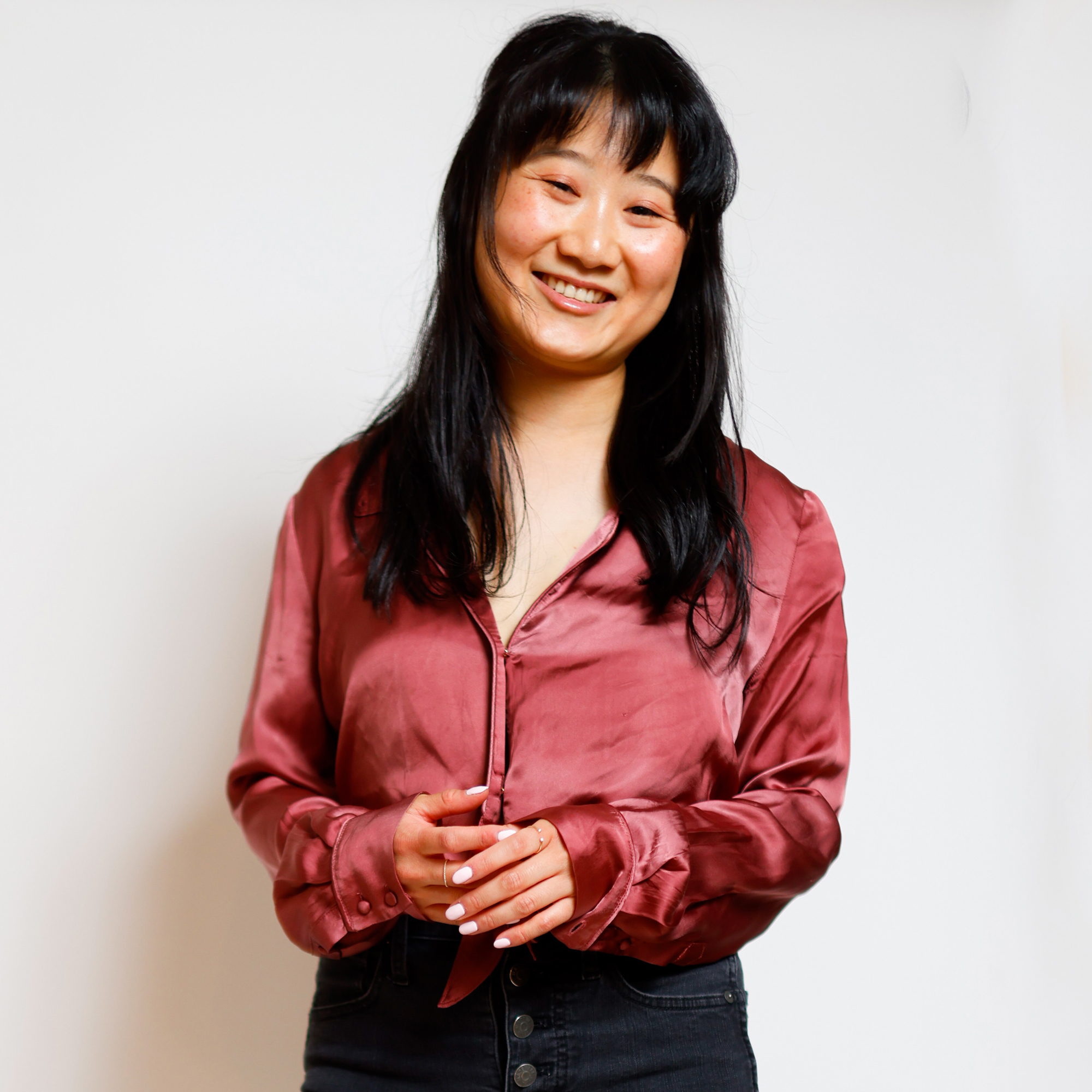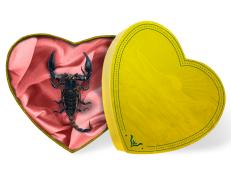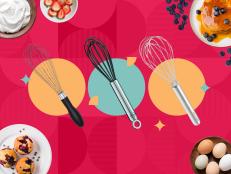How Heart of Dinner Is Bringing Lunar New Year to Seniors in Need
Familiar dishes, handwritten notes and thoughtful planning make this organization more important than ever to the Asian American community in New York City.

Update (February 18, 2021; originally published February 9, 2021): Heart of Dinner is participating in a grassroots initiative called #EnoughIsEnough. Spearheaded by Eric Sze of 886, the campaign is fundraising to provide meals for underserved Black, Latino and Asian American communities. Donors will receive a link to a set of virtual Lunar Banquet cooking classes, to take place on February 22, via Kitchen Rodeo with restaurateurs and chefs like Sze, Moonlynn Tsai, Yin Chang, Lucas Sin of Junzi Kitchen, Sahra Nguyen of Nguyen Coffee Supply and more. You can learn more about and donate to the initiative here.

Photo courtesy of Heart of Dinner
When the COVID-19 pandemic began to hit New York last March, the city came to a halt. Grocery stores became places of panic, restaurants shuttered and Chinatown became a ghost town. Foot traffic in the neighborhood plunged – right around what would normally be the busiest and most profitable time of the year, Lunar New Year season.
Instead, Asian businesses suffered disproportionately, attacks against Asian Americans increased and anti-Asian rhetoric rose by 800%. This – on top of the indiscriminating threat of the virus, mounting food insecurity and isolation – made the Asian American pandemic experience uniquely harrowing.
It was in response to this crisis that partners in love and life, Yin Chang, an actor and founder-creative director of 88 Cups of Tea, and Moonlynn Tsai, restaurateur of Kopitiam, pivoted their supper club to bring relief to the community’s most vulnerable. In April 2020, Heart of Dinner served its first hot lunches to homebound Asian American elders in New York City. The organization is now a certified non-profit that currently serves hundreds of seniors in need.
“This all started because at the height of the pandemic, we were experiencing racism on the day-to-day, coupled with a lot of news on food insecurity, especially for seniors,” says Chang. “It was a very intimate, personal offense to us. A guttural reaction.”
Every Wednesday, care packages are delivered. Volunteers come bearing hand-decorated paper bags filled with an ever-changing assortment of restaurant-prepared hot lunches, fresh produce, bulk ingredients and pantry essentials. Lunches can include takeout boxes of mapo tofu and summer soba salad; fish, mushrooms, potatoes and steamed bokchoy over a bed of white rice; a hearty bowl of jook.
Hot lunches are paired with enough food to last a few days – fresh Chinese mustard greens, daikon, bitter melon, dragon fruit; fresh-baked milk toast loaves and scallion buns; packs of tofu; boxes of Vitasoy soy milk that taste to me so sweetly of childhood.
The food in each bag is culturally specific – and adorned with illustrations and messages of love written in native languages, Chinese and Korean. Volunteers practice the strokes of characters trying to get them just right. In the imperfect, handmade décor is evidence of someone on the other side. It’s infused in the careful selection of the produce. And it’s most present in the weekly phone call to remind you to check your doorstep the next day, before the friendly visit of the volunteer delivery driver.
For Tsai and Chang, the packages are more than just meals. “When we bring on seniors, it’s for a while. It’s not a one-and-done. It’s important they have comfort and familiarity. They know they can rely on us – through snowstorms, holidays. Even during the peak of the pandemic.”
That thoughtfulness is critical. And the cultural specificity, sense of community and intimacy the care packages create can, quite plainly, be the difference between life and death.
The Centers for Disease Control and Prevention (CDC) has named loneliness and social isolation serious public health risks, linked to a higher risk of premature death, especially for adults aged 50 and older, and only made worse by the pandemic. Among vulnerable older adults, the CDC cited that immigrant and minority populations were at an even greater risk of loneliness due to stressors that can increase social isolation, like language barriers and differences in community.
When tasked with putting together senior-friendly packages, Chang, Tsai and their network of restaurant partners, ask themselves: Is it nutritious? Low in sugar? Easy to open? Easy to eat? Enjoyable? Will it remind them of home?
Citing her own very vocal grandfather, Chang poses, “Is it something our grandparents would love? That’s why cultural specificity is important.”
Lunar New Year looks brighter this year. Ahead of the new moon, which blooms on February 12, Heart of Dinner’s volunteer coordinator, Christy Lau, works during her lunch breaks to instruct volunteers on how to decorate bags that celebrate the year of the Ox.
One volunteer, Helen, folds ox-shaped origami that carry happy wishes.
Chang explains the seniors tell them how much they look forward to receiving the handwritten notes. Some cut out the front of the bags and keep a collection. While the usual grand, in-person celebrations aren’t realistic this year, the gold- and red-painted bags hope to bring a taste of Lunar New Year festivity.

Photo courtesy of Heart of Dinner
This Wednesday, Heart of Dinner’s seniors will get, from chefs Yen Ngo and Hannah Wong of Van Da, a combination lunch of Banh Tet, a sticky rice cake with mungbean and pork belly wrapped in banana leaves, and Harvest Noodles, a dish that “represents wealth and prosperity for the new year,” comprised of rice noodles, shiitake mushrooms, dried shrimp, duck egg omelette and chestnut.
From chefs Maiko Kyogoku and Emily Yuen of Bessou, a chicken nanban soba – matcha soba noodles in dashi broth with applewood smoked chicken. “It’s a riff on kamo nanban, which is a smoked duck soba noodle dish,” they explain. “Soba noodles are traditionally eaten on New Year’s Eve in Japanese culture (even though the Japanese celebrate the lunar new year and Chinese zodiac, the years’ end and beginnings follow the Gregorian calendar). Noodles symbolize longevity for the new year and it’s said that slurping the noodles without cutting the strands short will give you good luck for the year to come!”
And from chef Helen Nguyen of Saigon Social: egg noodles with shiitake, ginger, scallion, bokchoy and chicken.
Chang and Tsai go shopping on Tuesdays. And while much of what goes into the care packages is beholden to what they can find in Manhattan’s Chinatown, I ask what Lunar New Year desserts they’ll search for.
Oranges, surely. And traditional, lower-in-sugar sweets: nian gao (sweet rice cakes); wafer crackers; sweet and sticky rice; tangyuan (chewy rice balls); dan tat (Hong Kong-style egg custard tarts) and maybe Osmanthus Flower Jelly – a beautifully-scented dessert made of white mushrooms, goji berries, dates and flower petals – if they get lucky.

Jerome Quek/Getty
When I came across Heart of Dinner a couple months ago, Chang and Tsai’s story brought me to tears. I watched their About Us video once more, just before interviewing them, and I cried again. The ugly kind of crying that draws from a quiet place in your heart – a place of knowing. The tears sprung from sorrow and gratitude; from seeing one’s gong-gong and po-po so distinctly in recipients’ image. I understood, deeply, the painful distance between my grandparents’ home and home, as I – and many children of immigrants – have always understood, and wanted desperately to balm.
Heart of Dinner is, as Chang describes, a “large-scale love letter” to our community.
On January 27 of this year, Heart of Dinner reached its goal of serving 50,000 meals. And their next? 250,000. Chang says it truly “takes a village.” A community of restaurant partners, in-kind donors, volunteer delivery drivers, note-writers and brown bag illustrators fuel the “love-powered initiative” Heart of Dinner is today.
If you’re interested in helping Heart of Dinner reach its next milestone, you can donate to the organization directly or get involved in a myriad of ways from near or far.
Related Content:





























































